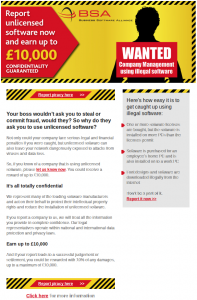vtiger 6.1.0 Released
After several months of development the latest version of the most popular open source CRM, vtiger CRM is released today.
vtiger 6.1.0 provides new features, over 150 bug fixes and support for newer versions of PHP and MySQL, as well as the new all Extension Store & vtiger Marketplace where our own Geographic Information System extension, GeoTools, was the first to be approved and published.
Release notes for vtiger are here.
Downloads are here.
As always, the UK’s most experienced vtiger partner Libertus Solutions is available for support and assistance with any vtiger implementation.
GeoTools: Geolocation services for vtiger CRM
As many of you know already, our company Libertus Solutions does quite a lot of work with the open source CRM called vtiger. It’s a very competent and accomplished product made even more so by its well thought out extension capabilities.
In this post I’m really pleased to announce our first open source vtlib module for vtiger called GeoTools.
It was derived from another project on the vtiger forge called Maps, which we have taken and extended in true open source style. Standing on the shoulders of giants, and all that…
GeoTools introduces Geolocation features to vtiger in a standard vtlib module package. It adds the ability to perform distance-based searches on your data.
GeoTools uses the Google Maps API to gather positional data, that’s latitude and longitude coordinates, for the entity records that have been configured in the GeoTools Settings area. Once we have acquired this positional data we can then perform location-based calculations to display the results on an embedded Google Map, and as a list view of entity records.
Anyway enough of the words already! Here’s a video:
As soon as the forge site is up I’ll update this and provide links to the code.
Update: Here we are: This will be a moving target for some time yet – it’s still rather “beta” grade code…
Open Source Software and Security
Back in December the UK Government published their Open Source procurement toolkit (in PDF and ODF formats) which is mostly aimed at the public sector procurement officials, but is of general interest too. One document in particular I would like to pick out and quote verbatim (which I can do under the creative-commons inspired open government license) relates to the myth that the government can’t use Free Software because of security concerns. This is completely and utterly false. Free Software can be put through the certification processes just like closed software, but for most normal applications formal certification makes little difference one way or another as this is not the way solutions are accredited. So here it is, in their own words:
Open Source Software and Security
December 2011
This note, developed in consultation with CESG, highlights some of the key security considerations for the use of open source software in Government, and their implications for procurement practice. It focuses on dispelling common security myths about open source software which prevent a level playing field for its evaluation and use in Government. It is published in recognition that a wider audience wish to understand the UK Government’s position on open source software and security. Public sector customers can obtain further information from CESG in GPG38.1. Open source, as a category, is no more or less secure than closed proprietary software.
All software, including open source and closed proprietary, will have vulnerabilities. Individual software products, regardless of category, will have strengths and weaknesses in security characteristics such as provenance, quality, support, and vulnerability management. Given the range of vulnerabilities and diversity of exploits, on balance, neither category is considered more or less secure than the other.
2. Therefore, open source software cannot be excluded from an options analysis for Government IT.
Given that no one type of software is inherently more secure than another, neither open source nor closed proprietary software should be excluded from an options analysis for security reasons. It is Government policy for open source software to be evaluated in an options analysis, and for suppliers to provide appropriately detailed evidence of the reasoning behind their selection. It is entirely possible that an open source option is not selected for valid reasons, such as insufficient functional fit, inability to meet performance requirements, or higher cost of ownership due to more expensive security controls. It is important that the same selection criteria are applied to all options. It is also important that requirements are not exaggerated, unnecessarily inflating costs.
3. CESG does not accredit software products. Departments accredit their own ICT solutions.
It is a myth that some software products are “accredited†for use in Government. This is a misunderstanding of the security framework and accreditation process. Departmental accreditation of their own IT solutions is a sophisticated and rigorous process encompassing business benefit, threat and risk assessment, hardware, software, communications, and human factors. CESG does operate assurance schemes through which security enforcing products, both open source and closed proprietary, can be evaluated and certified. Such certification assures the public sector that security enforcing products, such as firewalls and cryptography tools, can mitigate various risks to its information. The large majority of software used to build Government IT solutions does not fall into this category. Furthermore, the risk managed decision whether or not to use such software remains with the Department’s information risk owner.
Open Standards Open Opportunities
Flexibility and efficiency are perhaps not two words that have been traditionally associated with the public sector in general, and certainly not with government IT. This might change though, and you can help nudge it in the right direction. Last week, just before the budget was announced in front of a packed house of commons there was this little exchange:
John Pugh (Southport, Liberal Democrat)
To ask the Minister for the Cabinet Office what recent assessment he has made of Government policy on open source software and open standards; and if he will make a statement.
Francis Maude (Minister for the Cabinet Office; Horsham, Conservative)
We have always made clear that, where appropriate, Government will procure open source solutions.
Open source products are used in the delivery, of huge database programmes—such as the Indian Identity card scheme—at a greater scale and for much less cost than we have experienced in the past.
Gov.uk, the new platform for publishing in UK Government employs the same open source technologies.
It’s being delivered for a fraction of the cost of previous Government web schemes.
So not a big long speech, but there it is, said in the house and recorded for posterity with the transcript of the oral answers in Hansard and theyworkforyou.com,
The government is moving on Free Software, there is a very high level understanding of the need to avoid lock in, promote re-use and to remove the barriers to adoption for Open Source software. They have been taken for a ride by a bunch of proprietary suppliers who have sold them the same old stuff over and over again, with contracts that tie the government down and keep the gravy train rolling. There is no massive appetite for the government to contribute directly to free software projects, but they are very willing to have more open software from their existing and new suppliers, and to have those suppliers be good citizens in the open source community.
There appears to be a general alignment (and indeed confusion between) open source and open standards. What the government really appears to want is open standards, with open source software as a means to get to an environment where open standards are prevalent. This will give them the re-use and interoperability that they really want.
To this end the cabinet office is running a public consultation at the moment, asking you to comment on their thinking in the area of open standards. Don’t be misled though, this is all about open source really, and they really really want a bunch more responses to their consultation. You can view the consultation website here:
http://consultation.cabinetoffice.gov.uk/openstandards/
It is a bit of an epic read, there is a 31 page pdf describing the consultation then you can go on to provide your responses on the website where your answers will be published along with those of everyone else. I don’t think I have ever filled in a form where my answers were broken down into chapters before, but there is a first time for everything. Chapter 1 is all about how they should define what an open standard actually is, kind of like art, you know it when you see it. Chapter 2 discusses whether open standards should be mandatory (expect some detailed answers from proprietary suppliers in this section explaining why the world would end if openness was not optional). Chapter 3 is all about international alignment and would be a great place for comments from people who are not UK based but for whatever reason think we should be more interoperable at a government level.
Please do have a read of it and browse the questions and answer any you feel like giving your opinion on. Don’t feel you have to answer them all, or give long answers. I am assured that this consultation will make a difference.
UK OpenERP Partner Community
Yesterday I had the great pleasure of meeting and chatting with most* of the businesses that are official OpenERP partners here in the UK.
We met at a pub in central London, and talked for around 3hrs. Everyone seemed to get on really well and most of us took the opportunity to share our experiences and promote our individual areas of expertise.
Four of us ended up going for the obligatory curry after the event which was also fun and very enjoyable – especially when the waiter brought me a fresh Naga Chilli to tantalise my taste-buds – hats off to Alan Bell and Chris from Credativ for having a taste of raw Naga. They are definitely NOT for the feint hearted…
The UK partners present at our inaugural meeting yesterday were (in no particular order)
Value Decision
Credativ
Publicus Solutions
Seath Solutions
The Open Learning Centre
A business-minded community of partners represents a much more compelling proposition to our existing and prospective customer-base than do standalone partners.
And here’s a very dodgy picture taken by yours truly:
BSA Supporting Free & Open Source Software
Recently I’ve been getting, what I initially and mistakenly assumed to be, spam in my inbox from the Business Software Alliance. An organisation that doesn’t immediately spring to mind when thinking about Freedom and choice in software.This spam marketing literature however, is actually a very compelling call to action for those businesses that aren’t already protecting themselves by using Free and Open Source Software. If the image isn’t terribly legible, here are a few of the juicy bits just SCREAMING at you to think very carefully about the software choices you make in your business.
Your boss wouldn’t ask you to steal or commit fraud, would they? So why do they ask you to use unlicensed software?
Note the phrasing: “unlicensed software”. Of course Free software is licensed, so that’s OK then. There are lots of great Free Software licenses.
Here’s the bit where the BSA really start to suggest you should be using Free Software.
Here’s how easy it is to get caught up using illegal software:
- One or more software licenses are bought, but the software is installed on more PCs than the licenses permit
- Software is purchased for an employee’s home PC and is also installed on to a work PC
These activities are perfectly OK and in-fact encouraged with licensed Free software. A Free Software License gives a user the freedom to do these things; It’s called freedom 2: The freedom to redistribute copies so you can help your neighbor.
- Font designs and software are downloaded illegally from the internet
You can download legally lots of font designs from places such as the Open Font Library and Google’s WebFont Library online.
The recently released Ubuntu font is an excellent example of a high quality, freely available font.. You can read about it here, get it from here and even get the font source from here. You may also choose to use the Google Font API to use it freely on your website from here.
And as for downloading “software” well, there’s probably more Free software available for download than the BSA could shake a stick at.
So please, consider carefully what our friends at the BSA have to say and talk your bosses or employees about the choices they make. Using properly licensed software is not hard. You don’t have to be at risk from even making a simple mistake. Using licensed Free software protects you.
If you are in a business and want advice on the choices available there are companies such as our own that can help. The BSA would rather your employees take you to the cleaners…
So, if you know of a company that is using unlicensed software, please let us know now. You could receive a reward of up to £10,000.






